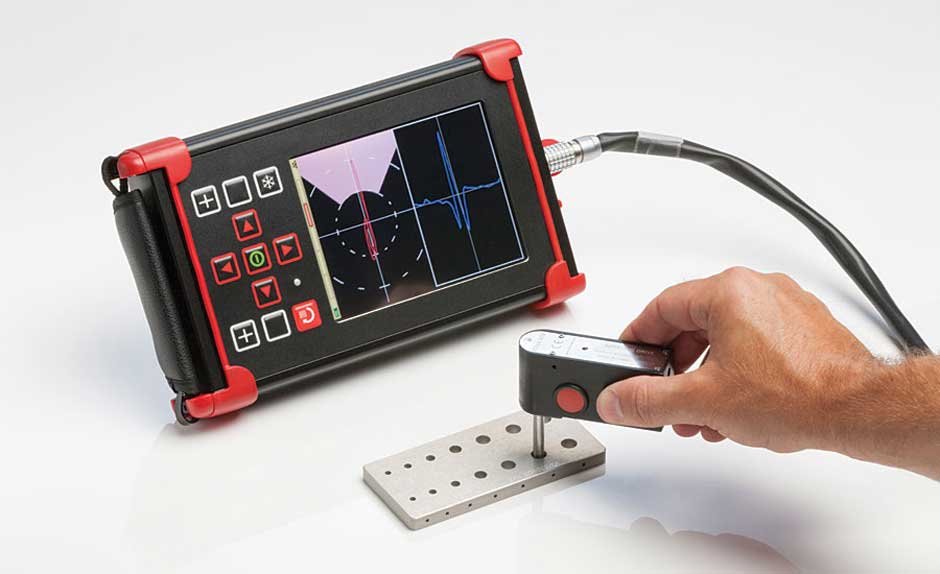Eddy current testing is a method that detects corrosion in electoral magnetic fields non-destructively. It does this by running an alternating magnetic field through the conductor and measuring any changes in this field when it comes back out. If there’s any corrosion present, it will alter the magnetic field and give you some indication that something’s wrong with your conductor.
This article will go through the fundamentals of eddy current testing, what it can do, and how it works.
I. What Is Eddy Current Testing?
Eddy current testing is an NDT method through an electrical conductivity meter. You can use it to test any material to see if there are any issues with it. This includes copper, aluminum, electromagnets, and even steel. By passing an alternating magnetic field through the conductor, the current passing through it will create a measurable difference in the field, which can tell you that something’s wrong with your system.
Like all non-destructive testing techniques, eddy current testing uses an eddy current conductivity meter. This device uses electrical current and a permanent magnet to produce a magnetic field. The conductor then passes through this field, and the tester reads the difference in the field caused by the created eddy currents. If the difference is greater than it should be, there’s something wrong with your conductor.
Eddy’s current testing is particularly useful when combined with other techniques. If a cable has started to rust, it would be obvious to a visual inspection. But without an eddy current test, the only way to know that something’s wrong is to physically touch the cable and see what’s going on. But by running an eddy current test, you can be sure that your tool is working as well as it should be and that nothing has been damaged by corrosion.
II. How Does Eddy Current Testing Work?
To understand how eddy current testing works, it is easiest to think of eddy currents as waves that move through a conductor. When a conductor is exposed to a varying magnetic field, fields lines bend and oscillate in response. These moving fields lines are what we call eddy currents. The changing magnetic field causes them but also creates little eddy currents in the surface of the conductor itself. When these current waves pass through the surface of an object, they create an electromagnetic field that we can measure on either side of the object.
This measurement generates two main types of data:
1) The ground return current measures how much current returns when AC signals are applied to the probe assembly. A lower DC voltage or current indicates greater corrosion;
2) The surface return current measures how much current flows through the object. A change in this value can indicate a problem with the conductor.
The electromagnetic fields produced and detected by the eddy-current probes are strikingly similar to the magnetic fields produced by conductors. Since this is a non-destructive way to inspect metal surfaces, an eddy current probe can be used on any metal surface without damaging it or the material under it. Unlike other inspection methods, such as X-ray, an eddy current probe can also be used on conductors that cannot be easily seen using other methods.
III. What is the advantage of Eddy Current Testing?
An eddy current can provide a great deal of information about conductors and the environment around them. The DC values measured by an eddy-current probe give engineers a clear picture of how well the metal conductor is bonded to the surrounding coating and whether or not corrosion has occurred on the surface or inside. The AC values measured by an eddy-current probe provide a visual and numerical representation of this data, which can be analyzed for things like corrosion, stress, and thin spots in materials.
Since eddy current testing does not affect the material being tested, it is often preferred over other inspection methods that damage or alter objects before testing them. This can be crucial in the case of testing coated materials, which are often easily damaged in other inspection methods. Eddy’s current testing also gives engineers a quick, non-destructive test method that can be used to check metal surfaces and components inside metal enclosures.
Conclusion
Eddy currents are non-destructive and important to aluminum and stainless steel. These currents can detect flaws that other methods might miss, such as corrosion in metal conductors, the stress in metal surfaces, or thin spots in metals. Because these tests are non-destructive, they allow for a more thorough inspection of products while being safe to use on any surface. Eddy’s current testing is also useful when inspecting components within metal enclosures where other inspection methods would alter the product or the surrounding materials.
Requirements:
- In the perspective of a second person to interact with readers – you.
- Expression should be concise and simple.
- Please follow my content framework. If you have some questions on the framework, feel free to contact me.
- As for the Part I: we can refer to the format and writing style like this:

